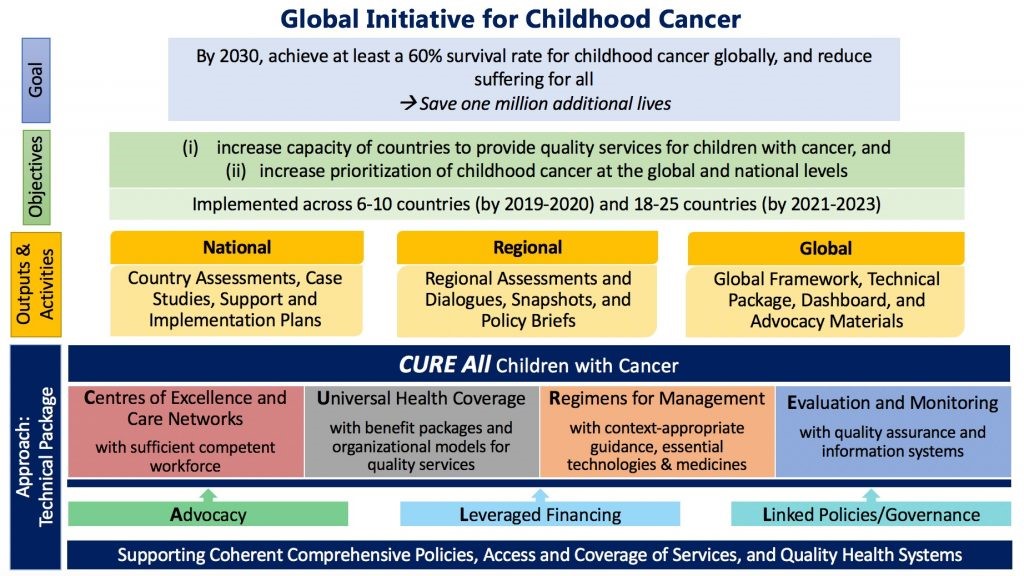Childhood cancer is a diverse and heterogeneous group of rare cancers that are unified by the age of the cohort, childhood cancer is defined as the group of cancer that arises between birth and 19 years of age.
Care for cancer, like so many other diseases, reflects the inequalities and inequities in our societies. The impact on children is devastating. Each year, an estimated 400 000 children are diagnosed with cancer around the world. The vast majority of these children live in low- and middle-income countries, where treatment is often unavailable, unaffordable or of poor quality. The survival rate for these children is estimated to be between 15% and 45%. This compares to a survival rate of more than 80% in high-income countries.
We continue to raise awareness about childhood cancer and express support for children and adolescents with cancer, survivors and their families. This is in line with WHO Global Initiative on Childhood Cancer, which aims at reaching at least a 60% survival rate for children with cancer by 2030.
This new target represents a doubling of the global cure rate for children with cancer. The aims of the Initiative are two-fold: to increase prioritization of childhood cancer through awareness raising at global and national levels and to expand the capacity of countries to deliver best practice in childhood cancer care.
The institute is working to improve primary prevention of childhood cancers through:
- Mitigation of risk factors and their determinants
- Enhancing access to appropriate cancer screening services for early detection
- Strengthening the referral pathway for patients with cancer and those suspected to have cancer
- Promotion of access to optimal diagnostics, treatment, palliative care and survivorship
- Strengthening cancer information systems, registration and surveillance
This can be achieved through multi-sectorial approach which will involve both health and non-health sectors. It will also involve the recognition of the best practices and scientific evidence supported through monitoring and evaluation and research.
The types of cancers that occur most often in children are different from those seen in adults. The most common cancers of children are:
- Leukemia
- Brain and spinal cord tumors
- Neuroblastoma
- Wilms tumor
- Lymphoma (including both Hodgkin and non-Hodgkin)
- Rhabdomyosarcoma
- Retinoblastoma
- Bone cancer (including osteosarcoma and Ewing sarcoma)

Leave a Reply